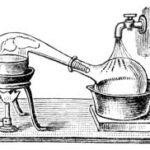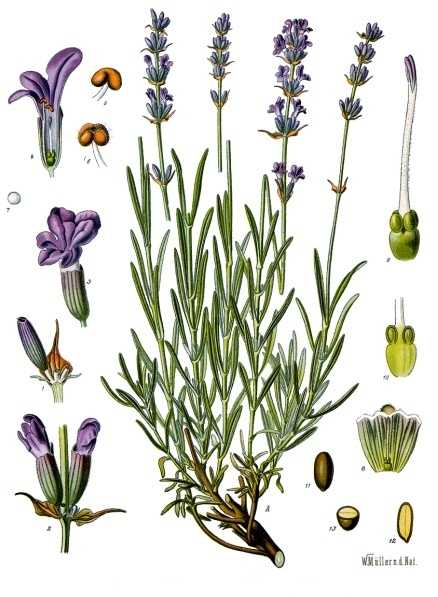
Distilling Your Own Essential Oils
Distilling Essential Oils – The Quest for Beauty
As an aromatherapist, I think about the hows and whys of scents. A lot. I love working in my garden and imagining how essential oils and herbs were used by men and women in the centuries before me. I often wonder if the distillation process was born early human evolution from a well-designed quest to capture the lovely scents botanicals provide. It is not a new endeavor, for sure. Archeological digs in Italy unearthed ancient stills that are actually quite similar to the equipment used today to distill essential oils. As best we can tell, these early stills employ some of the same techniques used today, too.
Distilling Essential Oils
The way I define an essential oil in the truly ‘correct’ sense is the capture of volatile aromatic components from various plant materials via either cold pressing aka ‘expression’ or steam distillation. I love lavender and use steam distillation every year to express my own essential oil. Years ago my interest drove me to read more and more about the ancient process of steam distillation. One of the most interesting facts is that again, the process really hasn’t changed all that much in thousands of years. I was able to find a class in town to attend to help sharpen my knowledge of the basics and decided that making my own ‘still’ really shouldn’t be all that difficult. (Actually it wasn’t hard for my handy husband at all!)
Cold Press Method – ‘Cold Pressing’ is the method used to capture the Citrus Oils such as Bergamot, Tangerine, Lemon, and Mandarin. Steam Distillation uses water and steam or what is called “direct steam.” The botanical itself will determine the right method
Steam Distillation Method – The underlying mechanism in Essential Oil Distillation is to force steam through the plant material so as to rupture the oil membranes in the leaves, stems and flowers. As the steam passes through the botanical, for instance, lavender flowers, essential oils are released.

The device used in distillation sometimes referred to as a still or “retort”, consists at a minimum of a reboiler or pot in which the botanical material is heated plus a condenser. The water boils in the retort and creates the steam which passes through the botanicals rupturing the oil sack. The steam transports the captured essential oil up through the ‘birds beak.’ It then travels down through the copper coil or ‘serpentine’ in the condenser where it is cooled with cold water to reconstitute the steam and essential oil back into a liquid state. The liquid then slowly drips into the separator or ‘essencier’ where the oil is then separated from the hydrosol or ‘distillate’.
A friend had an old moonshine still that he no longer found interesting so he kindly gave it to my husband who retrofitted it into a still for me to distill my lavender. My ‘retort’ is actually a 10-gallon stainless steel milk can which works just fine to hold my water and plant material. The plant material which is my home grown Lavender Angustifolia is placed upon the grid which he built inside- the water filled directly beneath. Because my still is small I have the luxury of using our gas stove for the heat I need to bring the water to a boil in order to create the steam.
Once the retort is filled with my Lavender, including the flowers half-bloomed and the stems as well, it is tightly sealed and I attach the ‘Birds Beak’ to the gasketed top. Steam will always choose the path of least resistance so this very fact always reminds me to A) be sure that the botanical is packed tightly within to avoid ‘rat holes’ in the botanicals which enable the steam to bypass the lavender and B) to be sure that the steam cannot escape where the birds beak is attached. Remember the steam is carrying the coveted essential oil now on through the condenser where it will be returned back to a liquid state by introducing cold water into the condenser so that there is a ‘forced’ change in temperature in the condenser. Here is how the change in temperature works in order to reconstitute the steam transporting the suspended Essential Oil back to a liquid state:
The steam which enters through the top of the condenser carries the suspended essential oil of Lavender it has acquired from the ruptured oil sack through the bird’s beak and onto the condenser via a copper coil. The condenser’s job is to cool the steam that has been generated in the retort. My very simple condenser was made from a 5-gallon pail that I fill with cold water as the suspended Essential Oil of Lavender and steam pass through on their way to my separator or ‘Essencier’. One of my most prized possessions, my Essencier, was hand constructed from copper as it is widely believed that copper offers a sweetness to the scent of many essential oils, Lavender being no exception.
Since water is heavier than the collected oil, the essential oils floats atop the water, known as a ‘hydrosol’ or ‘distillate water’, in the separator. And the oil portion, of course, is the essential oil!
Do you distill your own Essential Oils? Do you cold-press? Tell us about your favorite essential oil moments.
– Kathy


